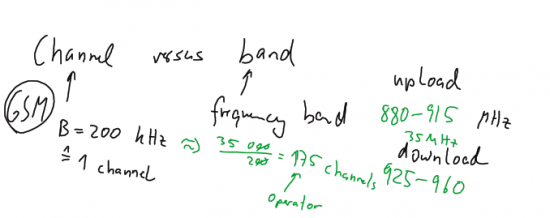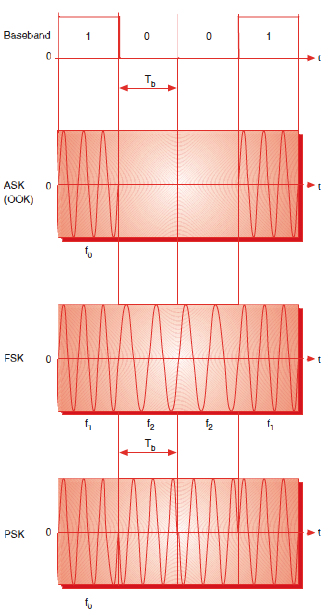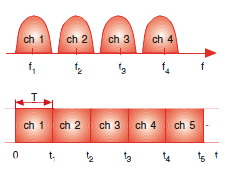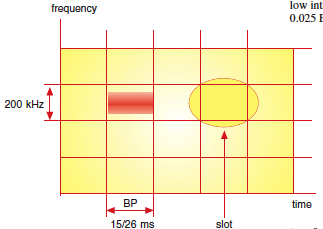A2-Radio Communication principles
| Wiki for ITS | ||||||
|---|---|---|---|---|---|---|
|
Contents
⌘Wave propagation and absorption mechanisms
| Band | Frequency | Wavelength | Propagation via |
| Very low frequency, VLF | 3-30 kHz | 100 - 10 km | Guided between the earth and the ionosphere. |
| Low frequency, LF | 30 - 300 kHz | 10 - 1 km | Guided between the earth and the D layer of the ionosphere. Surface waves. |
| Medium frequency, MF | 300 - 3000 kHz | 1000 - 100 m | Surface waves.E, F layer ionospheric refraction at night, when D layer absorption weakens. |
| High frequency, HF (short wave) | 3-30 MHz | 100-10 m | E layer ionospheric refraction. F1, F2 layer ionospheric refraction. |
| Very high frequency, VHF | 30-300 MHz | 10-1 m | Sporadic E propagation Extremely rare F1,F2 layer ionospheric refraction during high sunspot activity up to 80 MHz. Generally direct wave. |
| Ultra high frequency, UHF | 300-3000 MHz | 100-10 cm | Line-of-sight propagation. Sometimes tropospheric ducting. |
| Super high frequency, SHF | 3-30 GHz | 10-1 cm | Direct wave. |
| Extremely high frequency, EHF | 30-300 GHz | 10-1 mm | Direct wave limited by absorption. |
The frequencies which we use for mobile communications are ranging from 450 MHz (ICE), the old TV bands, 800-900 MHz (GSM), 1800 (GSM), 1900, 2100 MHz (UMTS), 2400 MHz (Wifi), 2650 MHz (LTE), and 5100 MHz (IEEE802.11a..). While previously frequency band were used for a specific technology, refarming started in 2012 to open for communication technologies in other bands. Examples of such refarming are LTE1800 indicating an operation of LTE in the 1800 band. Back in 2013 Apple surprised the European operators, as the iPhone came with LTE only in the 1800 band, and not, as usual in Europe, in the 2600 band.
(Source:http://en.wikipedia.org/wiki/Radio_propagation)
⌘ Coding and Modulation
A modulated radio signal can be written in a general form:
Any of these three parameters can be varied: amplitude-, frequency- or phase-modulation.
- Channel-coding is used to reduce bit-error-rate, e.g. through forward error correction.
- Multiplexing is used to split the total amount of radio into smaller pieces. Typical: time, frequency or code multiplex. examples
[Source:K.E. Walter, Basics of Mobile Communications]
Comments
Figure: A frequency band consists of n channels.
Example GSM: the upload band is from 880-915 Unik/MHz, which is 35 Unik/MHz. With a carrier of 200 kHz we have 175 channels, which have to be divided between the various operators.
⌘ Modulation types
- Amplitude shift keying (ASK)
- Frequency shift keying (FSK)
- Phase shift keying (PSK)
[Source:K.E. Walter, Basics of Mobile Communications]
⌘ Frequency and time division multiplexing
- Time domain, e.g. 8 slots in GSM
- Frequency domain, e.g. up- and downlink in specific bands
- Code division (CDM), specific codes
[Source:K.E. Walter, Basics of Mobile Communications]
⌘ Code division multiple access
UMTS as an example (in one of the future lectures)



